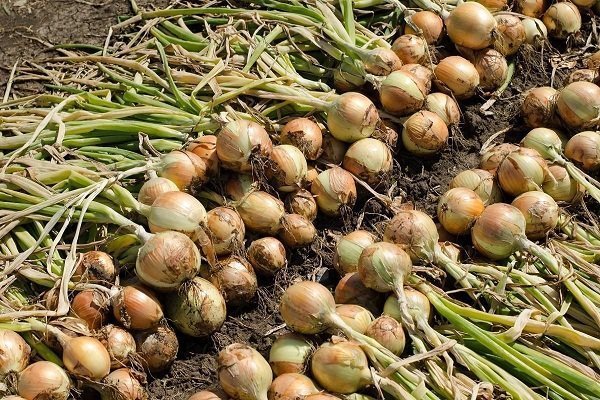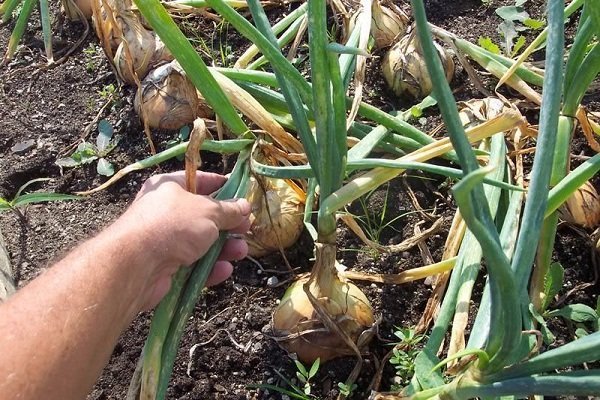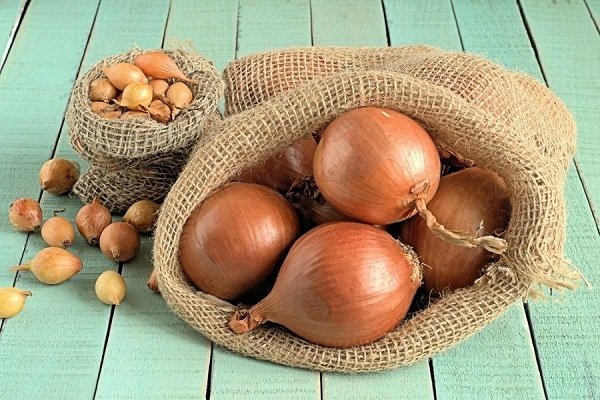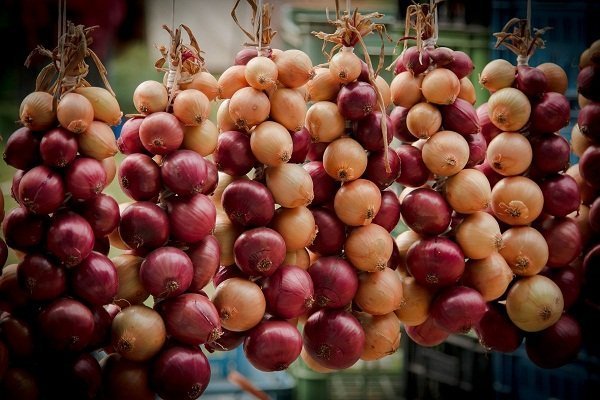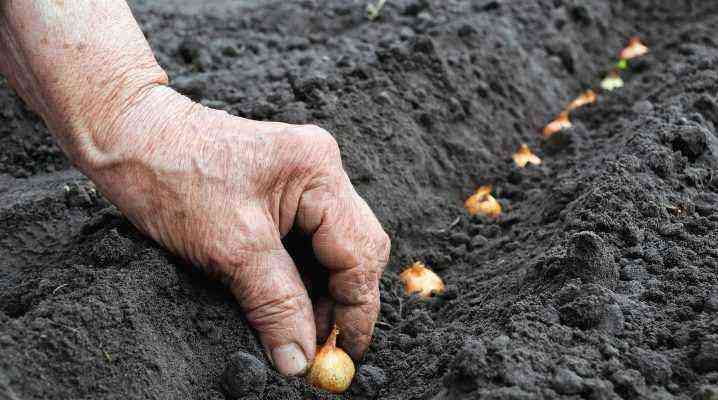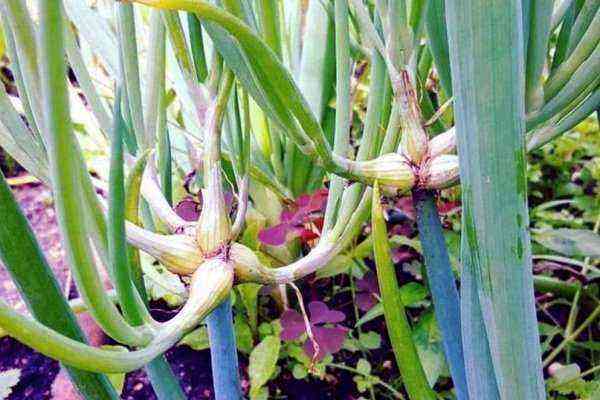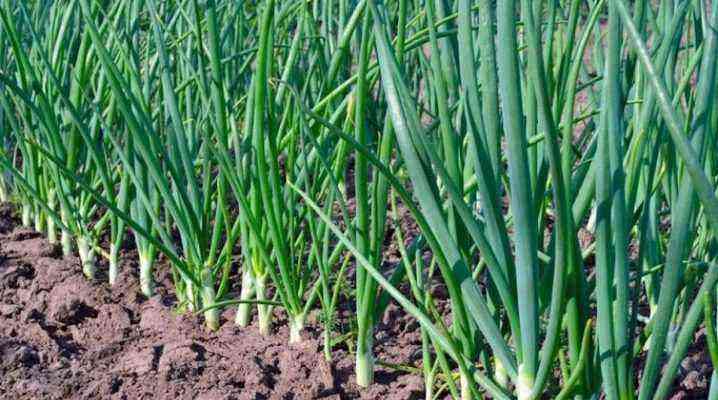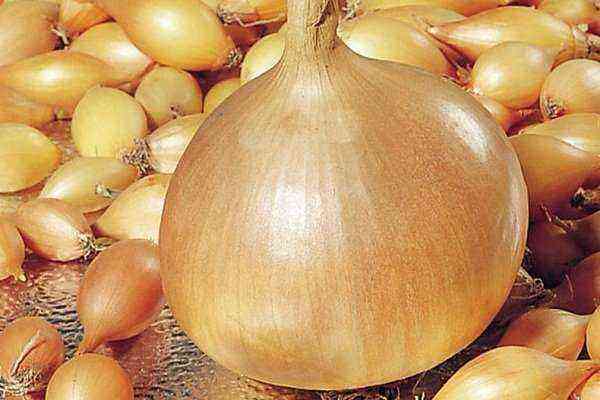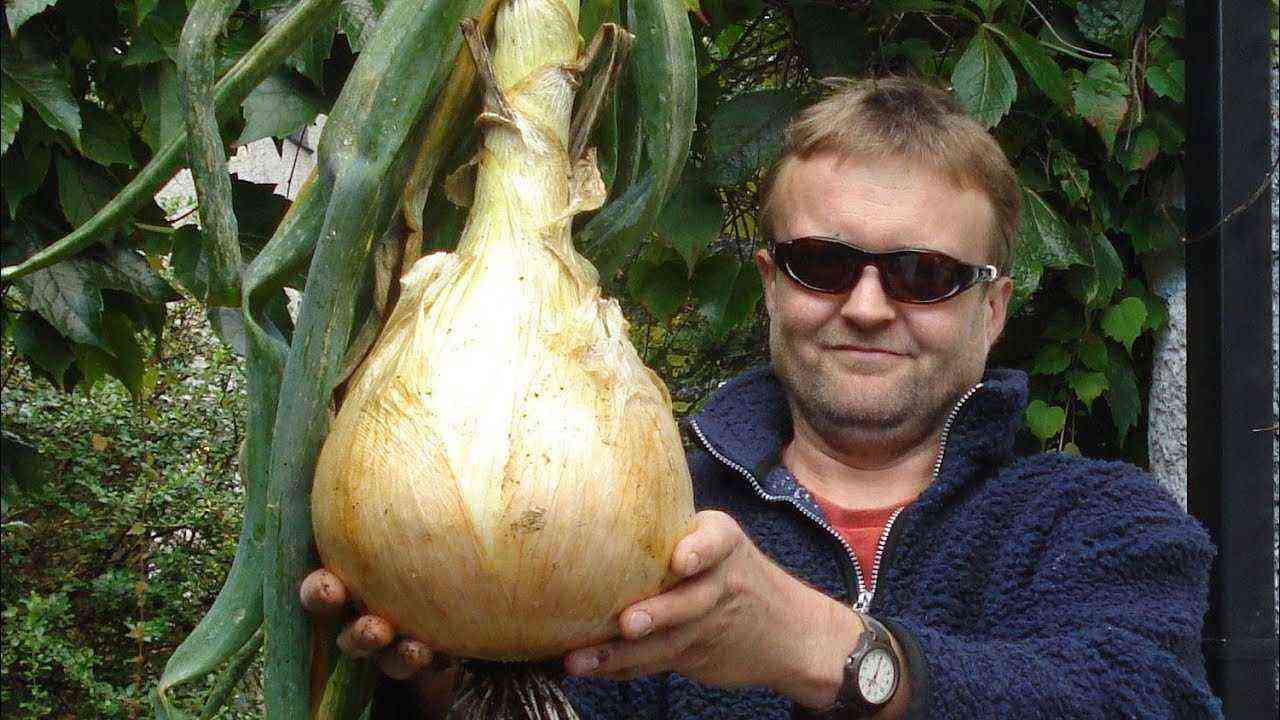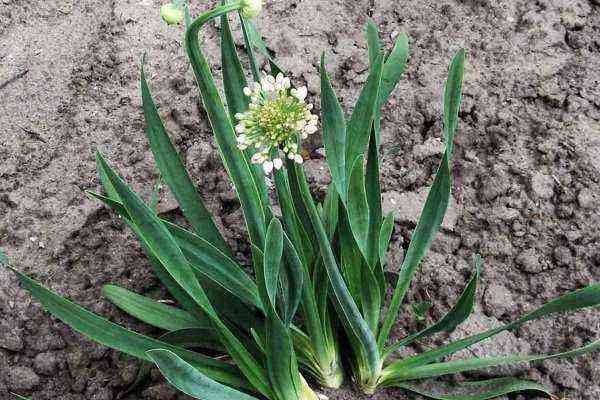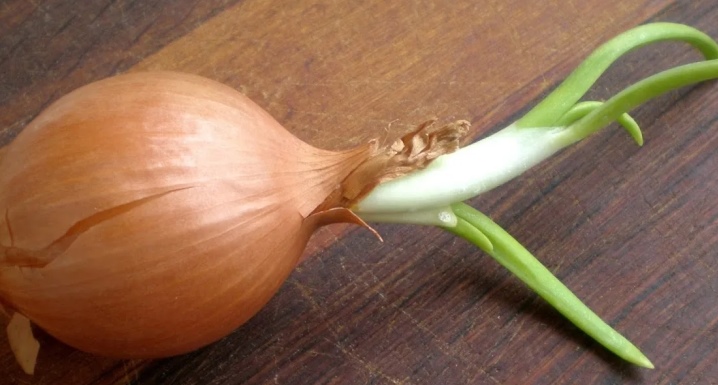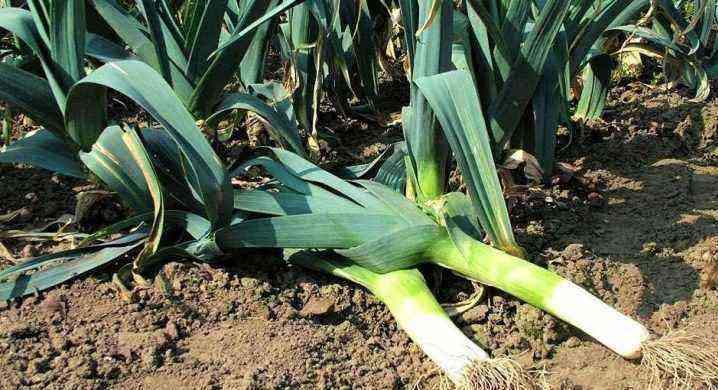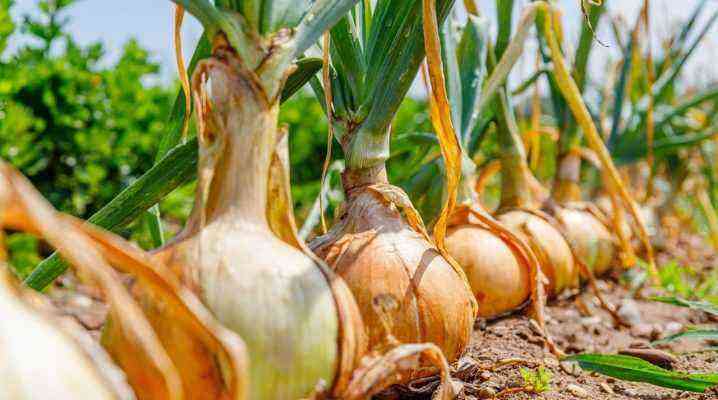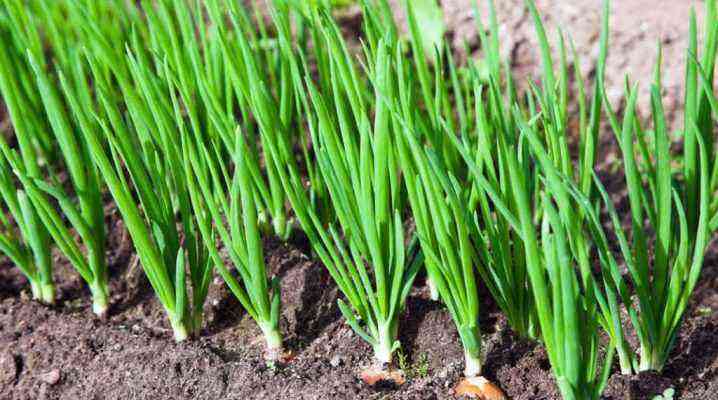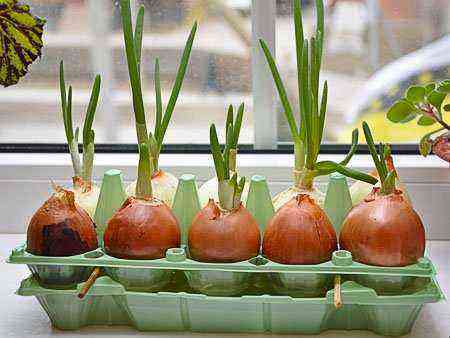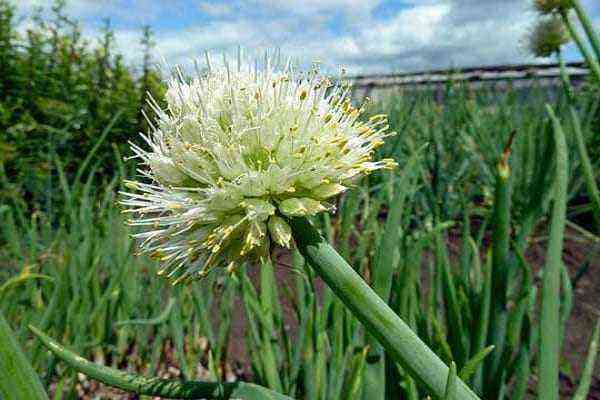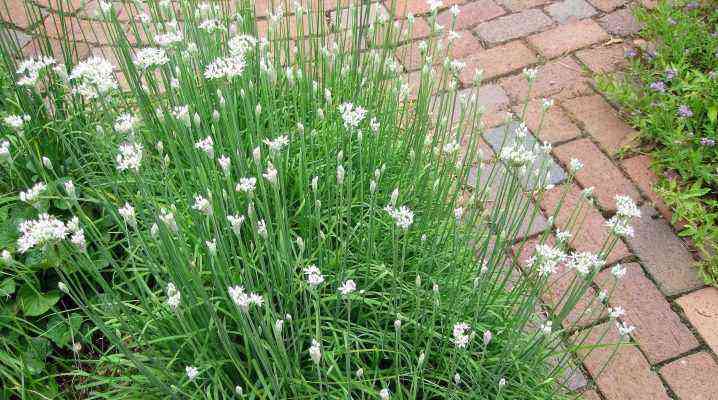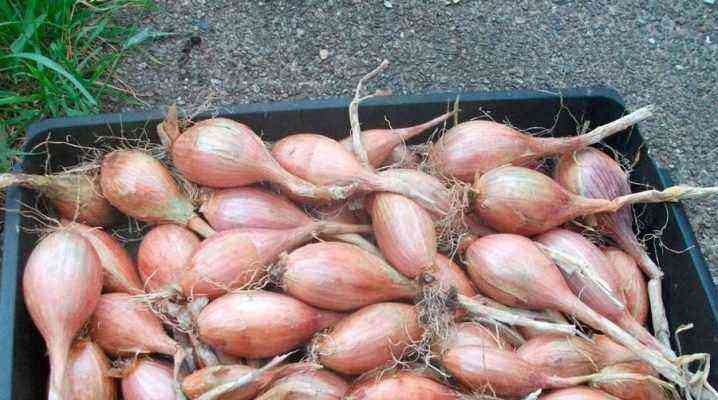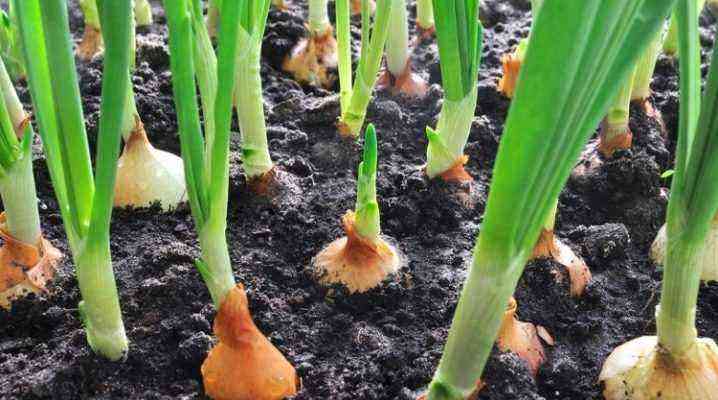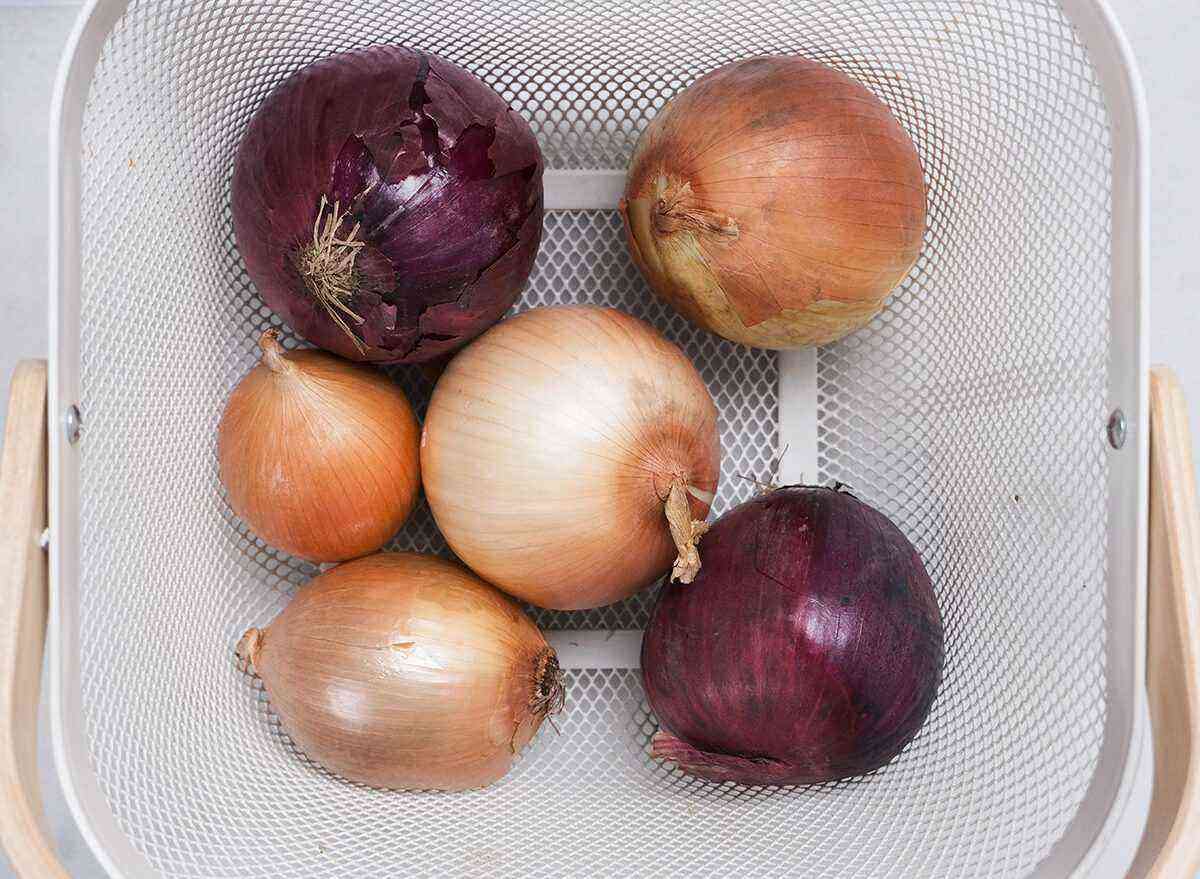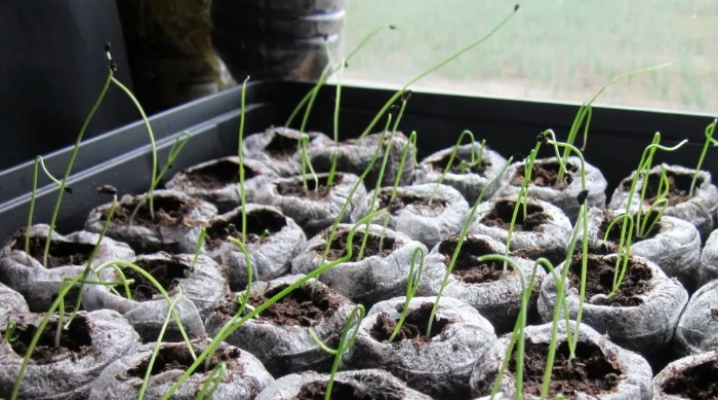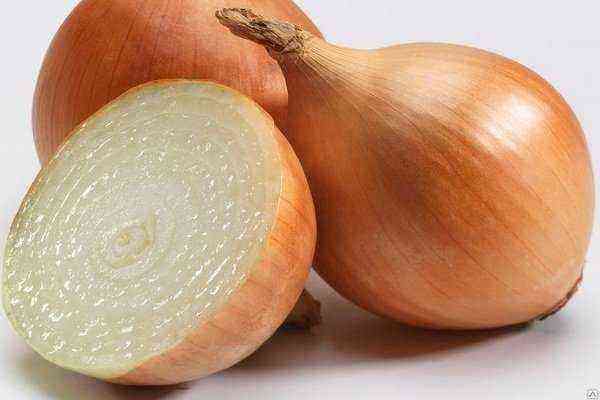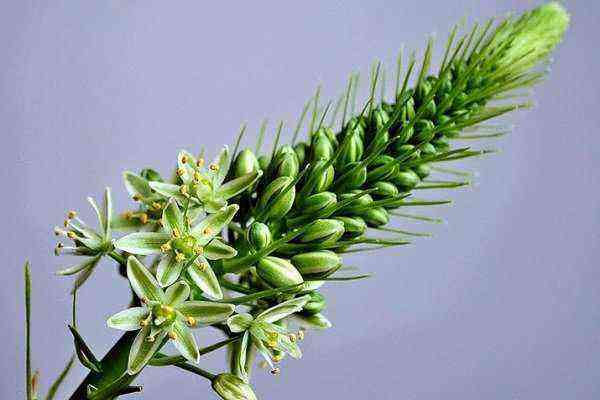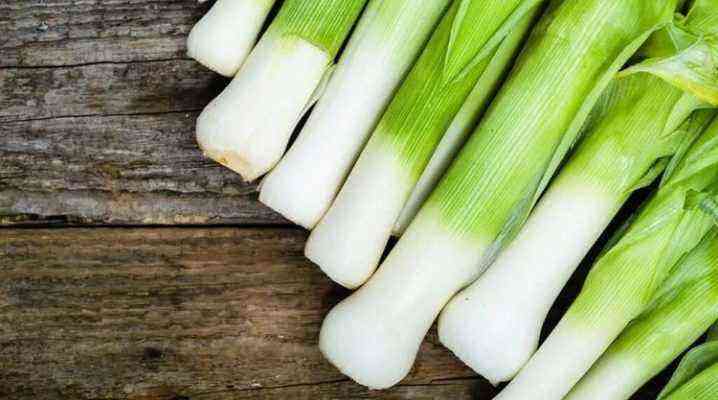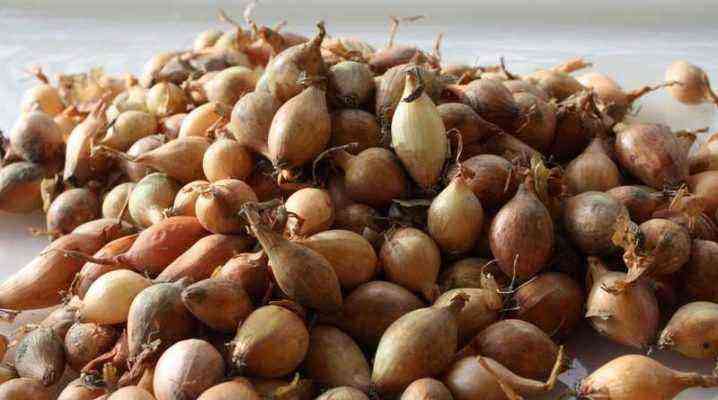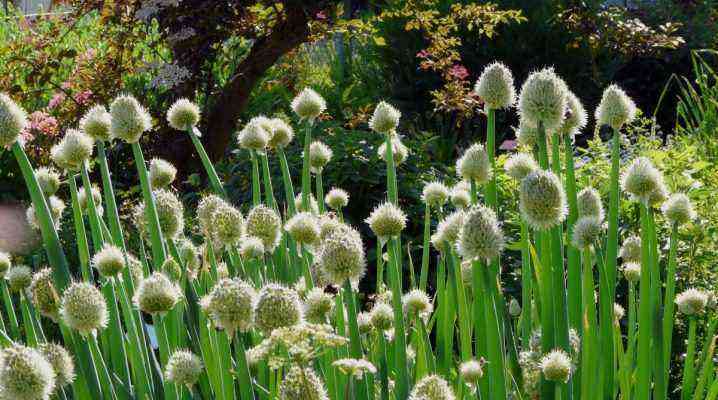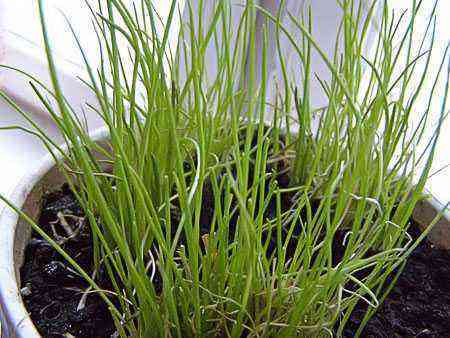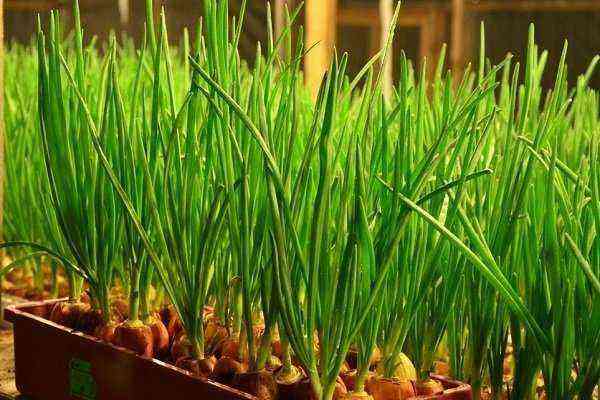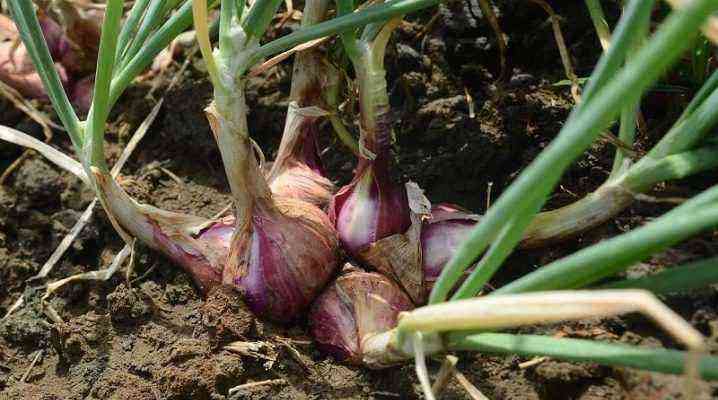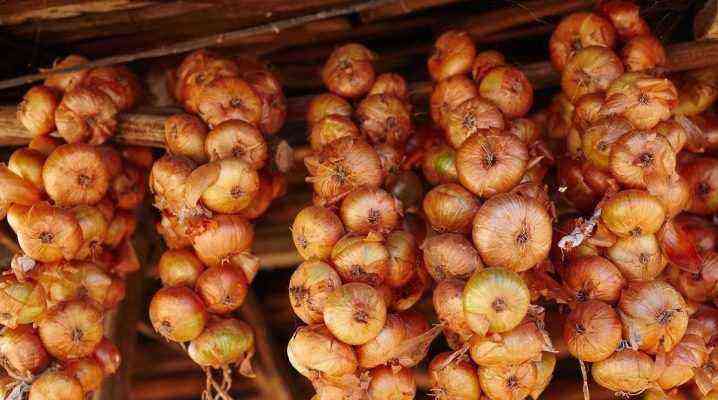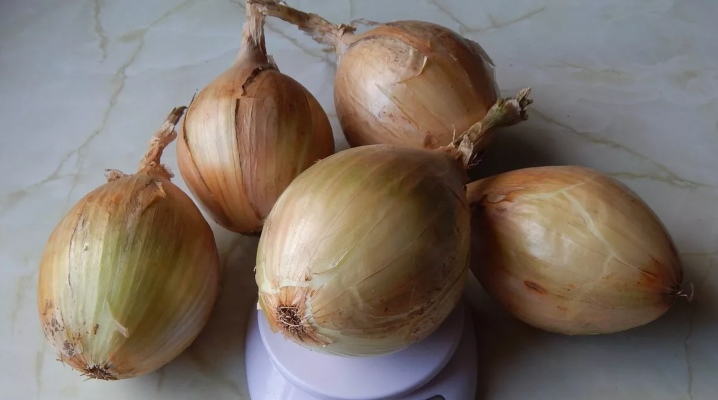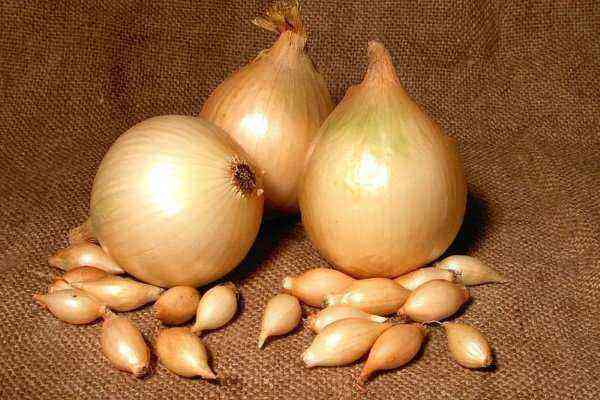Harvesting onions is a simple matter, as it seems at first glance. In fact, it is important to know the exact ripening period, collection technology, and follow the preparatory steps. Especially in adverse weather conditions. The shelf life of the bulb culture depends on this.
How to determine the timing of harvesting onions?
Onion harvesting begins after the full maturation of the heads. The term to a greater extent depends on the variety of crop – early ripening, mid-ripening or late-ripening. This is also influenced by factors such as weather conditions, climate, proper care, etc.
This video shows how to determine the readiness of the crop, as well as practical tips for harvesting onions:
By external features
If you don’t know exactly which onion variety is planted, or for some reason you cannot determine the harvest time, carefully inspect the plant, as the external signs will speak for themselves:
- The color of the feathers changes – they become yellow. But this is not always the case, some varieties of onions remain green.
- The above ground part falls to the ground. In some types of culture, it is too strong, so it may not fit.
- The root system becomes weakened – the roots are shortened, thinned, dry out.
- The neck of the head becomes thin, soft and dry.
- The husk acquires a golden hue or color corresponding to the varietal characteristics.
- There is peeling of the integumentary scales.
Lunar calendar
Many gardeners use the lunar calendar, which increases the shelf life of the heads. The calculation scheme is simple – root vegetables are harvested on a waning moon. It is strongly undesirable to collect on the full moon and new moon.
Based on the lunar calendar for 2019, onions are dug up on the following dates:
- August – 19-26, 29-31;
- September – 16-22, 25-27.
in a mathematical way
If it is impossible to determine the exact ripening period of root crops, carry out mathematical calculations. To do this, you need to know exactly the date of planting the vegetable and the variety (respectively, the ripening period). Early maturing varieties need 3 months, mid-season varieties – 120 days, medium-late – 140 days, late – 150. Thus, add the ripening period to the planting date, and you will get the harvest date.
Example:
- onions were planted on April 15;
- vegetation period – 120 days;
- 15 + 120 = 135;
- starting from April 15, count 135 days on the calendar – you get August 13.
Please note that dates may change due to weather conditions. If the summer is rainy, then the ripening time increases.
Depending on the region
Russia is divided into regions, each of which has its own climatic conditions that affect the ripening period of vegetable crops. Onions, based on regionality, are harvested at the following times:
- southern strip – the end of July;
- the middle lane – the beginning of August;
- northern regions – mid-late August.
How to prepare onions for harvesting?
The preparation of bulbous plants is required if there is a need to accelerate the maturation of the heads (for example, in case of impending adverse weather conditions). What can be done:
- If the stems are under the top layer of soil, tilt the soil, which will turn the foliage yellow. Shorten the roots a little (by 5 cm), which will lead to the fastest ripening of the bulbs.
- About a month before harvest, artificially bend the stems to the ground. Thus, nutrients will be supplied exclusively to the heads, which will begin to rapidly increase in size.
- Stop moistening the soil 15 days before harvest.
Harvest Technology
It is customary to remove onions from the beds in 2 ways:
- Manual method used for harvesting in small areas (cottage or home garden). With loose soil, it is enough to pull the stem with your hand and pull out the turnip. If the soil is dense, a tool (fork, shovel) is used. The bulbs are dug up and then pulled out.
- mechanized technology involves the collection of onion-harvesting special equipment. It is used in the fields with significant volumes.
Onion harvesting rules
If you follow the rules for harvesting onions, you can increase the shelf life of the heads, preserve the nutritional value and taste of vegetables. Primary requirements:
- The stems should not fall to the ground completely, only by 70-80% – the taste and sharpness of the culture depends on this. This percentage is noted 7-10 days before the exact harvest date.
- Weather conditions must be favorable.
- Cleaning time is in the morning. The fact is that immediately after removing the heads from the soil, the onion must be laid out in the garden to dry. If the tops have not dried out by the evening, cover the vegetables with plastic wrap, which eliminates the risk of moisture.
- Do not pull out 2-3 bulbs at the same time, even if the soil is very loose.
- Try not to damage the husk, act carefully.
- It is unacceptable to knock down the remnants of the soil from the heads (on any objects, hands, the surface of the earth, etc.) – wait until the natural drying and shedding of the soil occurs.
Do not cut the stems immediately after harvest – this leads to a rapid infection of the bulbs with pathogens.
Sevka collection rules
Sevkom called bulbs grown from seed, obtained in the first year. It is advisable to plant them next year to obtain full-fledged heads. The size of the set usually does not exceed 2,5 cm, so pay special attention to this.
The harvesting rules do not differ from the requirements for collecting onions, but in this case it is absolutely undesirable to dig up planting material in rainy weather. The fact is that the root system can re-root, because of which the bulbs will become unsuitable for planting until spring. For this reason, it is permissible to dig sevok earlier.
How to harvest in adverse weather conditions?
If the summer is rainy, then you don’t have to focus on a specific day for harvesting (wait for sunny warm weather), although it is not recommended to dig bulbs under such conditions. The same applies to climatic conditions with high humidity.
What are the implications for culture?
- Onions do not like excessive moisture, as the root system begins to die off against the background of decay.
- During prolonged rains, the ripening period increases, the heads remain underdeveloped. The reason lies in the fact that water contributes to the growth of green mass, and not the root crop.
- Waterlogging reduces the immunity of the plant, so it is exposed to fungal diseases. Most often it is powdery and downy mildew, root rot.
- The retention period is reduced.
You can minimize the risks and save the crop for long-term storage in advance (if it is known that the summer will be rainy), using the recommendations of specialists and gardeners:
- Choose the right variety (there are species that are resistant to putrefactive diseases and dampness).
- Plant the crop in the right place – well ventilated, with a slope to drain rainwater.
- Treat more often with anti-fungal agents.
How to act in adverse weather conditions:
- In about 20-30 days, stop fertilizing. If rains are planned for the time of harvest, then stop watering completely.
- A few days before harvesting, cover the beds with plastic wrap. To do this, install wooden pegs around the perimeter, on which stretch the non-woven material. This will prevent raindrops from directly irrigating the onions and at the same time the bed will be ventilated.
- Heads in the rain should be dug out without shaking off lumps of dirt.
- After harvesting, ensure proper drying – arrange the vegetables in a well-ventilated area (install fans if necessary). The drying time depends on the degree of wetting of the bulbs.
- When drying, turn the heads several times a day.
- As the dirt dries, peel the roots, but do not use sharp objects so as not to damage the scales.
Storage
The shelf life of onions depends on various factors – weather conditions, agricultural cultivation techniques, care, correct harvesting. But an important aspect is the accuracy of preparing the heads for storage, compliance with the conditions. During the preservation of the culture, be sure to inspect the bulbs once a month, detecting damaged elements, as they are subject to the formation of mold and rot.
How to prepare onions for storage?
Preparatory activities include the following main steps:
- Drying root crops immediately after harvesting the bulbs from the beds.
- Cleaning the heads from the remnants of the earth.
- Cutting feathers and neck (its height should be 4-6 cm).
- Subsequent drying of the bulbs at a temperature of +25 degrees (if it is sunny, the vegetables are laid out on the street).
- Root cutting by 2 cm.
- Removing the layer of scales.
- Inspection of each head for damage – rejection.
Today, an intensive method of drying root crops is used, which helps to increase the shelf life. For this, the bulbs are dried for 12 hours at a temperature of + 38-40 degrees. The method simultaneously destroys pathogenic microorganisms that develop diseases.
Drying requirements:
- Immediately after harvesting, it is advisable to dry the bulbs on the street – in direct sunlight. To do this, lay the heads on the surface of the earth (can be placed on a woven material to ensure breathing). If this is not possible, transfer the culture to a ventilated warm room. Time – from several hours to 2 days.
- The second drying is longer – 15-20 days. To do this, the bow can be placed in the attic or in any room, providing access to fresh air.
- Be sure to bend the neck, so that the greens will not draw juices from the heads.
- Root crops are laid out on wooden surfaces or hung tops up.
- If the bulbs are harvested in the rain, remove 1-2 layers of husks, which will allow the heads to dry faster.
- How to determine complete drying – the feathers become yellow and thinned, the neck, tops and roots are completely dry.
How to store a vegetable?
For the storage of onion crops, it is necessary to select an appropriate room that must meet the following requirements:
- It can be a cellar that meets the standards: air temperature – from 0 to + 4 ° C, humidity level – 75-85%. A ventilation system is required. The heads are hung or placed in a container. Vegetables can be sprinkled with dry sawdust, sand, chalk, dried grass, onion peel.
- A room in a house/apartment: air temperature – up to 20-22 ° C, humidity – up to 70%. In a warm room, the bulbs provide darkness. Avoid direct sunlight.
Ways to store onions:
- Wooden boxes with holes in the walls, that is, constructions from individual boards. If the container is solid, you can make holes with tools or fill them with sawdust, sand.
- Plastic boxes usually do not have holes. Therefore, they can be drilled (diameter 3 cm). Today on sale there are special models designed for vegetables. Their advantage lies in saving space in the room, as the container is stacked on top of each other.
- Cardboard boxes (banana boxes, containers for household appliances, food, etc.). The material is considered natural, perfectly breathable, but since the bow needs plenty of ventilation, you will have to make small holes.
- Baskets from natural vines – the best option, as flexible wood and wicker provide maximum ventilation inside. Please note that the baskets must be chosen in small sizes, since the middle part of the bulbs in them will not breathe. The optimal volume is 3-5 liters.
- Fabric bags (cotton, linen, burlap). Their size should be small – a maximum of 5 kg of vegetables. If there are no such dimensions on the farm, the bulbs are put in large bags, but not to the eyeballs, and the container is laid on its side. Thus, the heads inside will breathe.
- Old nylon tights found in every woman. The bulbs are laid in bulk, the structure is suspended. For better preservation, you can use another method – put one head in a stocking, make a knot, position the next one and tie it again. This is done until the grid is completely filled.
- Paper bags, bought in a supermarket, are well ventilated, eliminate the risk of putrefactive diseases.
- Polypropylene nets – Another of the best options, as it provides maximum air access.
- Weaving braids using feathers that do not need to be cut, and rope. There are several universal ways that not only preserve the bulbs, but also save space in the room, create a special flavor in interior design. The simplest braiding method is based on a three-strand connection of the bulbs – like a regular braid. You need to take a long string, fold it in half, make a loop into which to insert the first onion with feathers. Further, on one side and the other, the remaining heads are alternately woven. The bottom row is fixed with twine (a knot is tied).
Regardless of the method chosen, you can store the onion vegetable simply in the room, in the closet, under the bed, on the shelves and even in the refrigerator, whole or cut into rings:
- A small amount of onions is placed in the refrigerator on the lower vegetable shelf – for use for a month.
- Vegetables are stored in the freezer for a long time. Bulbs need to be peeled and chopped in a way convenient for you. Place in plastic bags, freeze.
- Powder – cut the cleaned and washed heads into rings, the thickness of which should be up to 4 mm. Next, cut the rings into 4 parts, put in a saline solution (1 g of table salt per 50 liter of water). Hold for 5 minutes, then dry until completely dry, grind into powder. Used as a seasoning, stored in a glass jar.
- Rings – cut into thin rings, dry.
How to dry onions for powder and rings:
- Under direct sunlight.
- On the heater.
- In an electric or gas oven. Turn on the device at 50 degrees, lay the chopped onion, dry for 6 hours.
- In the oven. First, dip the onion rings in boiling water for 2-3 minutes. Turn on the oven at 70 degrees, dry for 2 hours. Then lower the temperature to 40 degrees, bring to complete drying.
How to store sevoc?
The sevok, which will be planted in the spring, is pre-prepared in the standard way, but after sorting the oatmeal (small root crops up to 10 mm). These elements are not able to fully survive until spring planting, so they are planted for the winter or on a window sill for greenery.
Sevki should be stored in the same way as ordinary onions, but the following rules must be strictly observed:
- With a warm storage method, onions are placed in a room at temperatures up to + 25 ° C.
- With the cold method – in the cellar, the temperature is from 0 to + 3 ° С.
- Sevok is better preserved in the dark.
- Before planting, the onion is aged in a warm room for 10-12 days.
What happens if you don’t harvest on time?
Onions, like other crops, require strict adherence to harvesting dates. This is due to the fact that the following can happen:
- The taste quality deteriorates.
- The content of useful substances decreases.
- If harvested too early, the husk does not have time to fully form, which is why the bulbs are exposed to diseases. In addition, the neck does not have time to dry out, so it remains thickened and juicy, and this leads to a decrease in the shelf life.
- When the heads are kept in the ground, the risk of rotting and the occurrence of diseases against the background of wet autumn weather increases. Reduces storage time and excessive growth of the root system (also due to high humidity).
Possible errors and useful recommendations
Sometimes the harvest spoils during storage, which is associated with the commission of some mistakes. How to prevent this – useful tips:
- The conditions of temperature and humidity, collection and drying of bulbs are not observed.
- Onions do not tolerate sudden changes in temperature, so when transferring it from one environment to another, lower or increase the degrees gradually.
- The heads are not stored for a long time if there are unripe elements among the total crop (they must be used first). You can identify them by the thickness and juiciness of the neck.
- Do not cut off the neck before storing under the shoulders of the bulbs – you need to leave at least 4 cm.
- When overdrying the heads, the husk cracks, exposing the heads. This contributes to a decrease in shelf life and the development of diseases.
- Many beginners, to speed up the ripening time of the bulbs, cut the tops completely, and do not break them. It is forbidden to do this, since the heads are also fed from the feather part.
- The bulbs must not be damaged mechanically – thrown, tapped to clean them from dirt, use sharp objects.
- With a reduction in drying time, the vegetable is affected by fungi.
- It is undesirable to dry the heads in several layers – their inner layers of scales will not dry out.
- Store onion plants separately from other vegetables.
You can also learn about the rules for storing onions in the following video:
If you strictly followed the rules for harvesting and storing onions, but you failed to keep the crop for a long time – do not be discouraged, because experience comes with years and practice. Be sure to take into account the regional features of the climate, the conditions for a particular variety, and remember the timing of planting vegetables.
